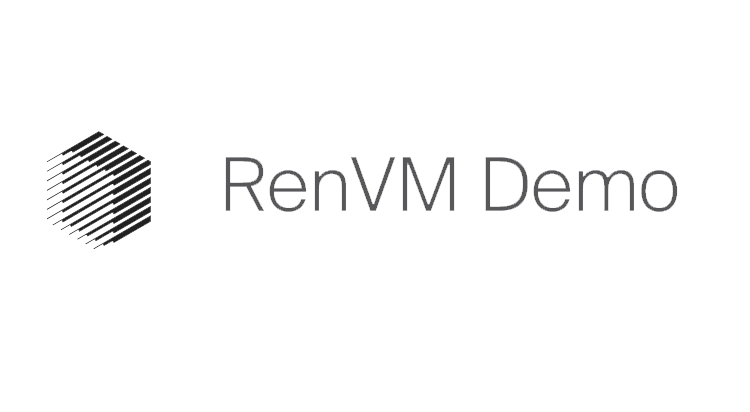Ren, an open protocol that enables the permissionless and private transfer of value between any blockchain, today announced the release of the RenVM testnet. This launch acts as a testing ground for a future mainnet, the testnet is the first time developers are able to build applications powered by RenVM.
RenVM is similar to a blockchain. It is decentralized, trustless, and Byzantine fault-tolerant. Anyone can run a node and participate in powering the virtual machine. Scripts can be executed even when some machines are offline — or acting maliciously — and execution is guaranteed to be correct.
The four core pillars that make up RenVM (listed below) allow for a privacy/interoperability solution that can scale, and allows for private computation over multiple inputs and multiple parties.
Four pillars making up RenVM:
- Shamir’s Secret Sharing – The foundation of how RenVM keeps user data secret
- Secure Multiparty Computation (sMPC) – How RenVM efficiently runs secret scripts
- Byzantine Fault Tolerance – Uptime in a dynamic and potentially malicious environment
- Hyperdrive – Fast decentralized consensus: RenVM uses a modified version of the Tendermint consensus algorithmic designed specifically for sharing and sMPC.
RenVM/SDK
RenVM can be used to power all kinds of secret applications, its focus is on interoperability between blockchains. RenVM allows smart contracts on various blockchains (starting with Ethereum) to accept and spend tokens on other blockchains (starting with Bitcoin and ZCash). This empowers DEXs to begin offering new pairings that were not previously possible without centralized parties. With all of this said, RenVM is not a product or an application in and of itself but is a network (and an accompanying SDK) that allows developers to bring multi-chain functionality to their applications.
Developers
The RenVM SDK is a JavaScript library and a collection of smart contract examples designed to make integration as simple as possible. The SDK can be integrated by any application, whether it be a decentralized exchange, lending, collateralization, or leveraging platform. The digital assets initially supported are Ethereum (ETH), ERC-20 based assets like DAI, Bitcoin (BTC), and Zcash (ZEC). The Ren team is focused on bringing BTC and ZEC to Ethereum as a first step, but will quickly be expanding to other blockchains once mainnet is released.
RenVM Developer Documentation: https://docs.renproject.io/developers
RenVM Documentation: https://docs.renproject.io/ren
Github: https://github.com/renproject
The Testnet Demo
To demonstrate RenVM’s capabilities the Ren team has built a simple x*y=k decentralized exchange. This interactive demo allows the public to try the technology and trade BTC and DAI (testnet tokens).
An additional purpose of testnet is not just to give the community demos, and devs something to build against, but it’s about preparing for mainnet. Since this is the first release of RenVM testnet, it is expected to contain bugs and for things to break. Therefore, the Ren team is encouraging all who utilize the demo or SDK’s to test the products under a variety of circumstances, try to find bugs, and then report them via this form.
“Our foremost task will be bringing stability and security to testnet. This will be done via rigorous in-house testing, but also through feedback from the public and our working group. Furthermore, we have a testnet pipeline which includes a series of events that our team will be pursuing during testnet to bring more exposure to the various aspects of RenVM. Once this stage is complete and we are happy with the security of RenVM, we’ll be submitting it and all of its ancillary code for a security audit. In the meantime, our team will continue to assist third-parties with integration and ensure RenVM and its SDK are as robust as possible. We are looking forward to getting this technology out to the broader ecosystem and can’t wait to see what is in store for the future!”
— Taiyang Zhang, CEO, Ren
